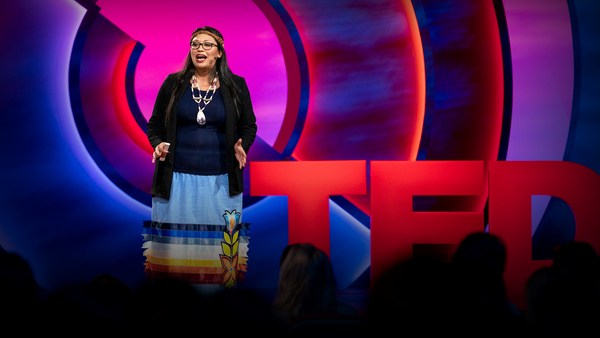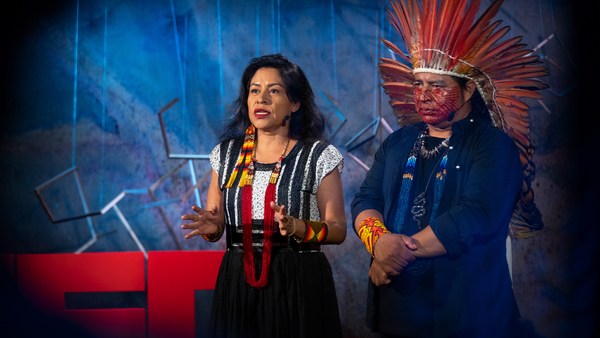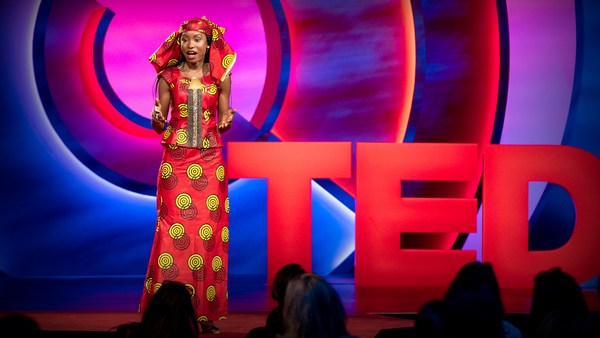When you imagine the architectural wonders of the world, what do you see? The greatness of the Pyramids of Giza or maybe the amazing aqueducts of Ancient Rome? Both of these are amazing feats of human innovation.
As an architect, I've often wondered why do we monumentalize the ancient wonders of civilizations that collapsed such a long time ago? I've traveled the world studying ancient innovation, and what I've found are Indigenous technologies from living cultures that are still in use. And some of these cultures you may have never heard of. They live in the most remote places on earth, facing environmental extremes like desert drought and frequent flooding for generations.
A couple of years ago, I traveled to northern India to a place overlooking the plains of Bangladesh where the Khasi people live in a forest that receives more rainfall than anywhere else on earth. And during the monsoon season, travel between villages is cut off by these floods, which transform this entire landscape from a forested canopy into isolated islands. This hill tribe has evolved living root bridges that are created by guiding and growing tree roots that you can barely wrap your arms around through a carefully woven scaffolding. Multiple generations of the Khasi men and the women and the children, they'll take care of these roots as they grow to the other side of that bank, where they're then planted to make a structure that will get stronger with age. This 1,500-year-old tradition of growing living root bridges has produced 75 of these incredible structures. And while they take 50 years to grow, in this landscape they actually last for centuries.
All across the globe, I've seen cultures who have been living with floods for thousands of years by evolving these ancient technologies that allow them to work with the water. In the southern wetlands of Iraq, which are formed by the confluence of the Tigris and the Euphrates rivers, a unique, water-based civilization lives. For 6,000 years, the Maʿdān have floated villages on man-made islands that are constructed from a single species of reed that grows around them.
And the Qasab reed is integral to every aspect of life. It is food for water buffalo, flour for humans and building material for these biodegradable, buoyant islands and their cathedral-like houses that they construct in as little as three days. And this dried Qasab reed, it can be bundled into columns, it can be woven into floors or roofs or walls, and it can also be twisted into a rope that's used to bind these buildings without the use of any nails. The Maʿdān villages are constructed in the marsh, as they have been for generations, on islands that stay afloat for over 25 years.
Although global attention is focused on the pandemic, cities are still sinking and sea levels are still rising. And high-tech solutions are definitely going to help us solve some of these problems, but in our rush towards the future, we tend to forget about the past.
In other parts of the world, where rivers are contaminated with sewage, a city of 15 million people cleans its waste water with its flood plains. On the edges of Calcutta, flanked by a smoking escarpment of the city's trash and ribboned by its highways, an Indigenous technology of 300 fish ponds cleans its water while producing its food. And through a combination of sunshine and sewage and a symbiosis between algae and bacteria, the wastewater is broken down. Fish ponds continue this cleaning of the water in a process that takes around 30 days.
And this innovation, it's not just a model for chemical and coal-power-free purification. Since Calcutta's core has no formal treatment, it's the city's only way of cleaning the water downstream before it enters the Bay of Bengal. What I find so unbelievable about this infrastructure is that as cities across the world in Asia and in Europe begin to replicate this exact system, Calcutta is now struggling to save it from being displaced by development.
And then to deal with flooding in a completely other way, the Tofinu tribe has developed the largest lake city in Africa. Ganvié, meaning "We survived," is built of stilted houses that are organized around a canal system that you can navigate by dugout canoe. And the royal square stands amongst 3,000 stilted buildings that include a post office, a bank, a mosque and even a couple of bars that are all surrounded by 12,000 individual fish paddocks, or mangrove acadjas. This chemical-free artificial reef covers almost half of the lagoon and feeds one million people that are living around it.
What amazes me is that while an individual acadja is pretty insignificant, when it's multiplied by 12,000, it creates an Indigenous technology the scale of industrial aquaculture, which is the greatest threat to our mangrove ecosystems ... but this technology -- it builds more biodiversity than before.
Just earlier this year, when I was back home in Australia, the craziest thing happened. The burned ash from the bushfires surrounding Sydney rained down on us on Bondi Beach. And worried about carbon emissions -- not viral transmissions -- we were already wearing masks. The air was so choked by a plume of smoke that was so big that it reached as far away as New Zealand. Then in the midst of these wildfires, which were the worst we'd ever seen on record, something unexpected happened, but incredibly amazing. The ancestral lands in Australia, where Indigenous fire-stick farming was practiced, were saved as these fires raged around them. And these ancient forests -- they survived because of seasonal, generational burning, which is an Aboriginal practice of lighting small, slow and cool fires.
So though wildfires are a natural disaster, as a consequence of climate change, they're also man-made. And what's so amazing about this is we have the ancient technology that we know can help prevent them, and we've used it for thousands of years. And what I find so fascinating about these technologies is how complex they are and how attuned they are to nature. And then, how resilient we could all become by learning from them.
Too often when we are faced with a crisis, we build walls in defense. I'm an architect, and I've been trained to seek solutions in permanence -- concrete, steel, glass -- these are all used to build a fortress against nature. But my search for ancient systems and Indigenous technologies has been different. It's been inspired by an idea that we can seed creativity in crisis.
We have thousands of years of ancient knowledge that we just need to listen to and allow it to expand our thinking about designing symbiotically with nature. And by listening, we'll only become wiser and ready for those 21st-century challenges that we know will endanger our people and our planet. And I've seen it. I know that it's possible.





